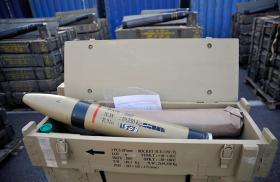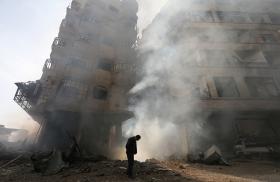In the next few days, the United Nations (UN) Security Council will have to decide whether to approve a new inspections regime for Iraqs weapons of mass destruction (WMD). For six months, the Council members have been debating this matter in closed meetings. The impetus to act now comes from the expiration of the latest of the six-month phases of the oil-for-food program. Some Council members are insisting that before there can be the usual extension of that program for another six months, action is needed on the inspections issue; indeed, the Council has twice temporarily extended oil-for-food (once for two weeks, once for a week) as it has approached a decision on inspections.
Iraqi WMD Activities Since Inspections Ended: The end of inspections in December 1998 did not mark the rebirth of Iraqs WMD program. From 1991 to 1998, even while subject to UN weapons inspections and monitoring, Iraq continued to engage in proscribed procurement, research, and development activities. For instance, during this period, UN weapons inspectors found that Iraq tried to obtain missile components from Rumania, smuggled missile gyroscopes and accelerometers from Russia, and continued research on long-range missiles. It converted its biological agent production facility at al-Hakam to produce chicken feed and pesticide to prevent discovery of its actual purpose, but for naught; it was discovered and destroyed by UN weapons inspectors in 1995. Moreover, Iraq secretly contracted to purchase large fermenters for producing biological warfare agents from Russia (it is unclear whether they were ever delivered) and may have conducted tests of biological agents on human subjects.
The reason Baghdad attaches such great importance to WMD despite the high costs in foregone oil income is the belief that chemical weapons saved Iraq from defeat during its eight-year war with Iran, and that WMD will be the foundation of future efforts to transform Iraq into a regional power. Most important, Iraqi president Saddam Husayn probably believes that WMD are key to his personal survival, and that no one will dare drive on Baghdad as long as he is able to use WMD if his survival is threatened.
If Baghdad engaged in proscribed weapons activities while inspections were occurring, one must assume that it has continued--if not accelerated--such activities following the halt to inspections and monitoring. Baghdad is likely working to enhance the lethality of its chemical and biological warfare (CBW) agents, to increase the stability of CBW in storage, and to extend their effectiveness after dissemination. It is probably also working on more effective dissemination mechanisms for CBW than it had in 1991. Iraq may also have produced limited quantities of agents for experimental purposes or to replace pre-1991 stocks that may have deteriorated in storage.
On the other hand, there is no overriding reason for Baghdad to undertake large-scale production of CBW. Iraq probably retains sizeable stocks of CBW agents from before 1991, and militarily significant quantities of CBW can be produced in days (biological agents) or weeks (chemical agents). Furthermore, large-scale production of CBW might provide intelligence indicators that could prompt renewed air strikes by the United States and its allies and result in damage to Iraqs surviving CBW production capabilities. Iraq is probably also still engaged in research and development of delivery systems, such as missiles of proscribed range (greater than 150 kilometers), though such efforts may be constrained by damage inflicted by Operation Desert Fox in December 1998.
Iraq is likewise almost certainly continuing with its nuclear program. It is probably working to resolve some of the bottlenecks that plagued the program in 1991 (if these have not been resolved already) and to refine its nuclear weapons design so it can produce smaller and lighter weapons. Although its nuclear weapons design in 1991 was still too large for delivery by a Scud-B missile or one of its Iraqi derivatives, this may no longer be the case. And if Iraq succeeds in acquiring fissile material from the former Soviet Union, it is almost certain that it will work to weaponize this material. Based on what is known about the state of Iraqs program in 1991, it seems likely that such an effort would succeed.
Operation Desert Fox and Weapons Inspections: One year ago (December 16-19, 1998), U.S. and British forces carried out a four-day aerial blitz to punish Iraq for its obstruction of UN weapons inspections and destroy components of its surviving WMD infrastructure. Air and missile strikes focused on Iraqs WMD delivery means: missiles, unmanned aerial vehicles (UAVs), and helicopters.
Even one year later, it is difficult to say exactly what the bombing accomplished. Poststrike assessments indicated numerous hits on Iraqs missile research-and-development infrastructure, and that some unique pieces of equipment may have been damaged. Accordingly, Iraqs missile program may have been set back. It is not clear, however, what kind of damage was done to Iraqs UAV and helicopter force (which could be used to deliver CBW), though it was probably limited, as UAVs are low-tech systems that are relatively easily repaired or replaced; moreover, Iraqs relatively large helicopter force was dispersed at the time of the attack.
More important than destroying facilities was the effect Desert Fox had on the regimes self- confidence. The strikes also targeted the Special Republican Guard and Republican Guard. That shook the regime, which fears a repeat attack on the organizations which comprise the main pillar of Saddams rule. This may, in large part, explain Iraqs relative quiescence in the past year.
In a radio address to the nation in the final hours of Operation Desert Fox, U.S. president Bill Clinton identified four "red lines" that could prompt the renewed use of force by the United States. One of these was the reconstitution of Iraqs WMD. It is therefore possible that the United States will at some point in the future again strike Iraqs WMD infrastructure.
Toward a New Inspection and Monitoring Regime? Britain and the Netherlands have proposed a resolution, backed by the United States, which may come to a vote in the Security Council in coming days. It would establish a new organization to replace UNSCOM: the UN Monitoring, Verification, and Inspection Commission (UNMOVIC). Baghdad has vowed to reject a new inspection regime, though that could just be its opening position in protracted negotiations. Baghdads rejection of a new resolution, however, would enable Washington to score a few propaganda points, while reducing international pressure to lift sanctions.
Should Iraq agree to the resumption of inspections, it would be months before a new organization could be established, and months more until the efficacy of the new inspection and monitoring regime could be evaluated. UNMOVIC would face numerous obstacles, and its prospects for success are poor. Much will depend on the character of its new executive chairman. He will have to navigate the new organization between the UN secretary general, UNMOVICs college of commissioners (who will reflect the fractious politics of the Security Council), and the government of Iraq. All three will act to limit UNMOVICs freedom of action. The key tests for the commission will be defining the required disarmament tasks and performance standards that would trigger the suspension of sanctions, and deciding whether UNMOVIC will function like UNSCOM or like other UN organizations. That is, will it rely on sensitive intelligence, professional weapons specialists on loan from UN member states, and intrusive surprise inspections; or, as seems more likely, will it rely on UN professional staffers chosen on the basis of geographic origin rather than professional competence and operate in a transparent manner. Such an organization is unlikely to make headway toward disarming Iraq.
In short, a new resolution is a potentially risky gamble, because a new inspections and monitoring regime is likely to be highly constrained and unlikely to prevent Iraq from continuing work on WMD. Moreover, although the United States retains the option under the draft resolution of revoking the suspension of all export controls every 180 days, this may not provide leverage over a Baghdad that does not seem to care much about the suspension because Iraq will still be under tight constraints about its imports. On the other hand, Baghdads rejection of a new resolution could reinforce the sanctions regime that has denied Saddam access to oil revenues that he could use to bolster his rule and further rebuild his military machine. Yet, this course of action entails risks as well, as it would not prevent him from building a nuclear weapon should he obtain fissile material from the former Soviet Union. This sobering reality only underscores the need to redouble efforts to rid Iraq of Saddam and his regime.
Michael Eisenstadt is a senior fellow at The Washington Institute
Policy #428


